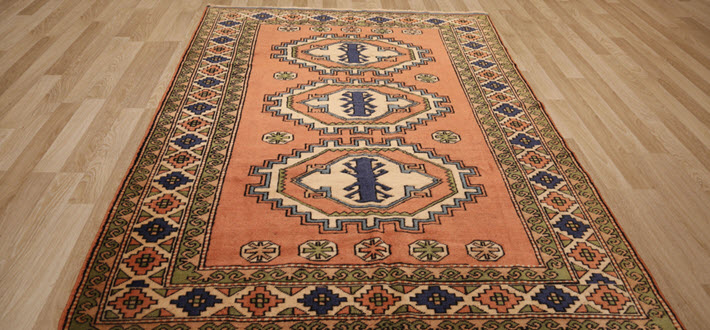Kilim rug features a pile-less textile made from several flat weaving textiles. The word ‘kilim’ has a Turkish origin. The origin of Kilim rugs date backs to the time of Mongolian rule. However, Kilim rugs have a mixed heritage from Turkey, North Africa, Iran, Afghanistan, Pakistan, and China. The mixed heritage gives Kilim rug beautiful patterns and colors with intricate detailing.
How Are Kilim Rugs Different from Other Rugs
There are many qualities of Kilim rugs that make them different from other rugs. The most important quality that differentiates Kilim rugs from others is that it has no pile. It has a flat surface making it light-weight and easy to use. As there is no pile, Kilim rugs use interweaving of wefts and wraps for flat weaving.
Materials and Texture
Wool
Wool is the most common material used for manufacturing Kilim rugs; this is why Kilim rugs have a fair share in the realm of hand-knotted rugs. Wool is the primary material for most of the warps and wefts along with the cotton warps, which produces a vast majority of Kilim rugs. The wool is widely used for making of Kilim rugs due to its many inherent properties. It is very easy to handle, whether spun or woven. Its texture is very supple and durable. Wool readily takes in any die, producing colorful and beautiful Kilim rugs. The supply of wool is plentiful, producing large number of Kilim rugs.Cotton
Because of the high and plentiful supply of cotton, it is used for making warps of Kilim rug. Cotton is one of the best textures considered for making Kilim rugs. Pure cotton retains its natural whiteness for a very long time. Cotton is very easy for manufacturing rugs as it can be spun into thin and fine strands. Cotton is also used for designing Kilim rugs. It is interwoven in certain places to highlight patterns, lines, or colors in the overall design of the rugs made with wool.Animal Hair
Although animal hair is not as common as cotton and wool, it is popular for making Kilim rugs. Camel hair, goat hair, and hair from the tail of horses are also used for manufacturing Kilim rugs. Mohair gives soft tuft and shiny appearance when mixed with wool.Silk
Flat-weaves made out of silk are rare but are still used to produce luxury Kilim rugs. Kilim rugs made out of silk are very valuable and costly and is also used to showcase wealth and status.Kilim rugs have a class of their own. With a pile-less, flat-weave texture and a mix of heritage, Kilim rugs have unique designs and beautiful appearance to add character to any room setting.






